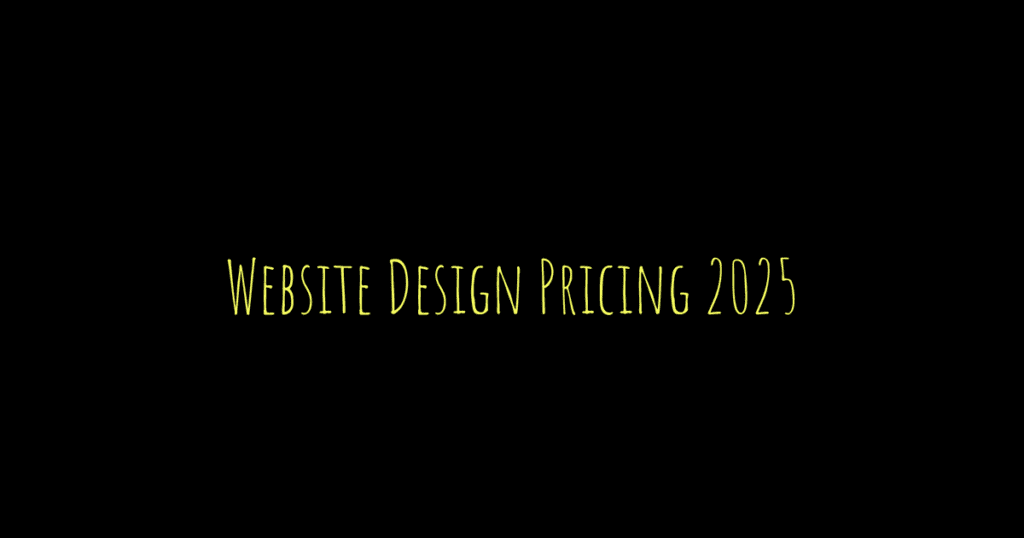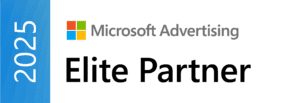Determining how much to charge for designing a website in 2025 involves understanding current market rates and various influencing factors. Generally, web design prices range from $2,000 to over $10,000, depending on the complexity of the project. For instance, basic sites like blogs cost less than intricate e-commerce platforms. Custom designs usually fetch higher fees than template-based ones. Pricing models can be flat fees or hourly rates based on project scope. Additional costs like hosting, domain registration, and maintenance should also be factored in. Educating clients about the value of good design is important for justifying your prices and ensuring you remain competitive in a shifting landscape.
1. Current Market Rates for Web Design

In 2025, the average rates for website design vary widely based on several factors, generally falling between $2,000 to $10,000 or even higher for more complex projects. Freelancers typically charge between $20 to $150 per hour, while agencies often set their rates from $75 to over $250 per hour. For instance, a simple portfolio website might cost around $2,500, whereas a fully functional e-commerce site could easily exceed $10,000. The complexity of the design plays a crucial role in determining the final price, as basic sites are significantly less expensive than those requiring intricate functionalities and custom features.
| Design Type | Average Price Range | Freelancer Hourly Rate | Agency Hourly Rate |
|---|---|---|---|
| Basic Websites | $2,000 – $5,000 | $20 – $75 | $75 – $150 |
| Intermediate Websites | $5,000 – $10,000 | $50 – $100 | $100 – $200 |
| Complex Websites | $10,000+ | $100 – $150 | $200+ |
2. Factors That Influence Website Design Pricing
Several factors can affect how much you should charge for designing a website in 2025. First, the complexity of the design plays a significant role. A simple blog will cost less than a sophisticated e-commerce site that needs multiple features and integrations. For instance, while a basic informational site might range from $2,000 to $4,000, an e-commerce platform could start from $5,000 and easily exceed $10,000, depending on the number of products and functionalities required.
Customization is another key factor. Using pre-made templates can reduce costs, but custom designs that reflect a client’s brand and needs usually command higher prices. For example, a custom logo and tailored layout might add several thousand dollars to the overall cost.
Functionality requirements also impact pricing. A site needing complex features like user accounts, payment gateways, or API integrations will typically be more expensive. The more advanced the functionality, the more time and expertise it requires, which can drive up your rates.
The size of the client’s business is another consideration. Larger companies often have bigger budgets and may be willing to pay more for a professional website that meets their needs. Conversely, small businesses or startups might have limited funds, which could affect your pricing strategy.
Geographic location can also influence pricing. Designers in metropolitan areas like New York or San Francisco may charge more than those in smaller towns due to the higher cost of living and demand for services.
Understanding these factors and how they interact will help you set competitive prices that reflect the value you provide.
- Level of expertise and experience of the designer
- Complexity of the website project
- Client’s industry and market
- Geographic location of both client and designer
- Additional services offered (e.g., SEO, maintenance)
- Timeframe for project completion
- Client’s budget and willingness to pay
3. Different Pricing Models for Designers
When determining how to charge for website design, understanding different pricing models is crucial. The flat fee model is popular for projects with a well-defined scope. For example, if a client wants a simple blog site, a designer might quote a flat rate of $3,000, covering all agreed-upon features. On the other hand, the hourly rate model is flexible, allowing designers to charge based on the time they invest. This is particularly useful for ongoing projects or when the client’s requirements are not clear at the outset; rates can range from $50 to $150 per hour depending on the designer’s experience and location.
Another approach is value-based pricing, which focuses on the benefits the website brings to the client rather than just the time spent on design. For instance, if a designer can demonstrate that a new e-commerce site could significantly boost a client’s sales, they might charge a higher price based on that projected value. This model requires a solid understanding of the client’s business goals and the potential return on investment (ROI).
Ultimately, the choice of pricing model can significantly influence the designer’s income and the client’s satisfaction, making it important to choose a method that aligns with both parties’ expectations and project requirements.
4. Additional Costs to Consider for Clients

When designing a website, it’s essential to inform clients about additional costs that may arise beyond the initial design fee. One significant expense is hosting and domain registration. While some designers include these costs in their packages, others charge separately. Clients should be aware that these are ongoing costs that need to be maintained annually.
Maintenance and support represent another crucial aspect of total website costs. Many designers offer packages that cover regular updates, security checks, and troubleshooting. Depending on the client’s needs, this can be billed monthly or annually, and it’s vital to discuss this upfront to avoid any surprises later.
SEO and marketing services are also important to consider. A well-designed website needs to be discoverable, which often requires additional investment in search engine optimization. Clients may need to budget for ongoing SEO services, social media marketing, or content creation to drive traffic to their site. For example, a client may initially focus on design but later realize they need a marketing strategy, which could add significant costs.
By discussing these additional expenses early in the process, designers can help clients understand the true investment required for a successful online presence.
5. Emerging Market Trends in Web Design
In 2025, the landscape of web design is rapidly evolving, driven by several key market trends. First and foremost, there is an increasing demand for mobile-responsive designs. With more users accessing the internet via smartphones and tablets, websites must adapt seamlessly to different screen sizes. This trend not only enhances user experience but also impacts SEO rankings, making it essential for designers to prioritize mobile-first approaches.
Another significant trend is the growth of e-commerce. As online shopping continues to surge, businesses are seeking sophisticated e-commerce solutions that can handle complex transactions and offer personalized shopping experiences. This shift means that designers may need to upskill in areas like payment integration and user journey optimization to meet client needs effectively.
Additionally, the integration of AI and automation tools in the design process is reshaping pricing structures. While these technologies can streamline workflows and reduce time spent on repetitive tasks, they may also lead to lower costs for clients. Designers who embrace these tools can optimize their services, but they must also find a balance to ensure that creativity and personalized touches are not lost in the process.
Another trend is the heightened focus on accessibility. As awareness about digital inclusivity grows, clients are increasingly looking for designs that cater to users with disabilities. Implementing features like screen reader compatibility and keyboard navigation is not just an ethical responsibility but can also be a unique selling point that justifies higher pricing.
Lastly, designers are seeing a shift in client expectations regarding transparency and engagement. Clients want to be involved in the design process and appreciate clear communication about timelines, budgeting, and progress. This trend emphasizes the importance of building strong client relationships, which can lead to repeat business and referrals.
6. Educating Clients on Web Design Value
Educating clients on the value of quality web design is crucial for justifying your pricing in 2025. Many clients may not understand why a well-designed website can lead to higher conversion rates and improved user experience. For example, a small business owner might see a website as just a digital brochure, but by explaining how user-friendly design can keep visitors engaged and lead to more sales, you can help them appreciate the investment. Discussing metrics like bounce rate and conversion rate can illustrate the return on investment (ROI) that a well-crafted site can provide. Additionally, showcasing case studies of previous clients who saw significant growth after redesigning their sites can help reinforce the value you bring. By making it clear that web design is not just about aesthetics but about creating a functional and effective online presence, you can better position your pricing to reflect the true value of your work.
7. Tips for Setting Competitive Pricing in 2025
To set competitive pricing for web design in 2025, start by researching current market rates in your area and niche. This will help you understand what others are charging and allow you to position yourself accordingly. Consider offering tiered pricing packages that cater to different budgets and project scopes. For instance, a basic package could cover simple websites, while premium packages could include custom designs and advanced functionality.
Next, evaluate your unique skills and experience. If you have a strong portfolio or expertise in a specific area, such as e-commerce or SEO optimization, don’t hesitate to charge a premium for your services. It’s also crucial to factor in your operating costs, such as software subscriptions and marketing expenses, to ensure your pricing is sustainable.
Engagement with prospective clients is key. Ask them about their goals and budget, which can guide you in tailoring your proposal. Offering clear value propositions, such as increased conversion rates or enhanced user experiences, helps justify your pricing. Additionally, consider the impact of emerging technologies like AI-driven design tools, which might allow you to streamline your workflow and reduce costs, potentially leading to more competitive pricing.
Finally, stay flexible and be open to adjusting your rates as market conditions change. Regularly review your pricing strategy based on feedback and market trends to stay relevant and competitive.
Frequently Asked Questions
1. What factors should I consider when designing a website?
When designing a website, consider factors like the target audience, the website’s purpose, user experience, design aesthetics, mobile responsiveness, and the technologies you’ll use.
2. How important is user experience in web design?
User experience is crucial in web design because it affects how easily visitors can navigate the site, find information, and complete desired actions, which can lead to better engagement and conversions.
3. What are some common web design trends in 2025?
In 2025, common web design trends include minimalistic layouts, bold typography, dark mode designs, interactive elements, and the use of AI to enhance user experiences.
4. How can I ensure my website is mobile-friendly?
To ensure your website is mobile-friendly, use responsive design, optimize images and content for smaller screens, and test the site on various mobile devices to check usability.
5. What role does SEO play in website design?
SEO plays a vital role in website design as it helps improve the site’s visibility in search engines. This involves strategic use of keywords, optimizing page load speed, and creating user-friendly layouts.
TL;DR In 2025, website design pricing ranges from $2,000 to over $10,000, influenced by factors like design complexity, customization, functionality, client size, and location. Common pricing models include flat fees, hourly rates, and value-based pricing. Consider additional costs such as hosting, maintenance, and marketing services. Stay updated on market trends like mobile responsiveness and e-commerce demands, and educate clients on the value of quality design to justify costs. Regularly review your pricing strategy to remain competitive.



